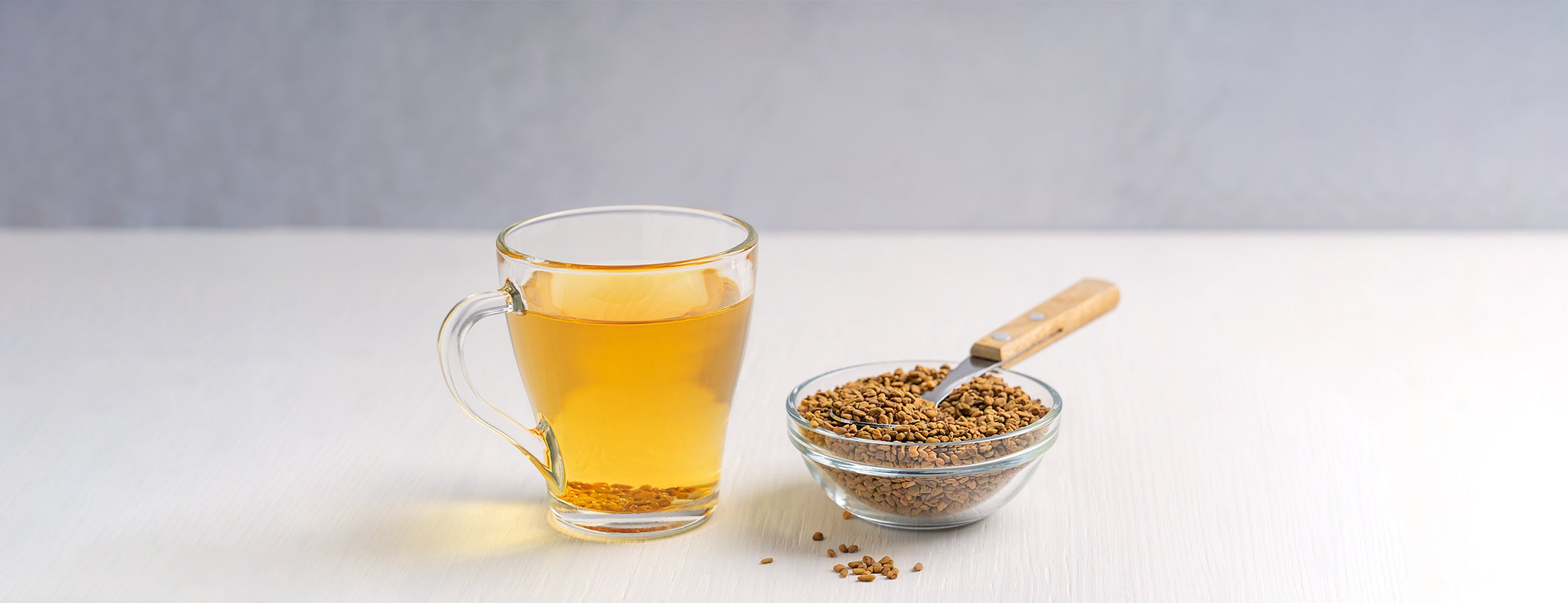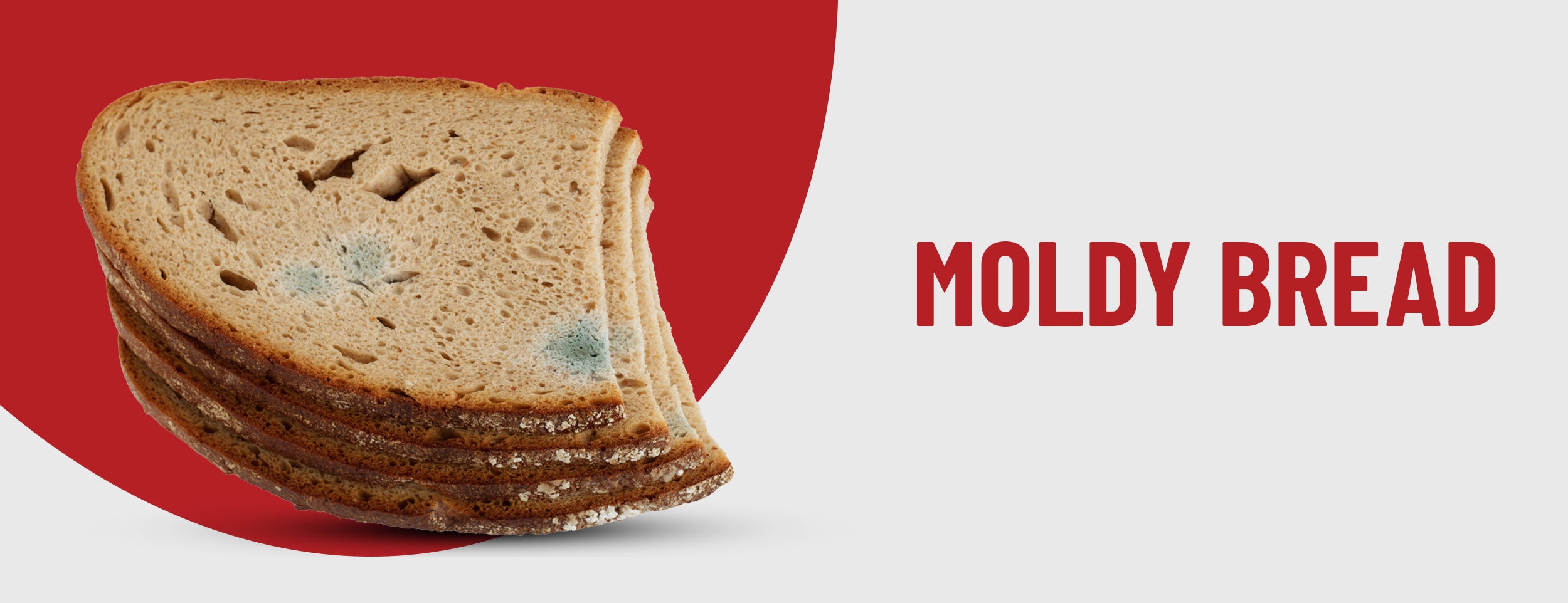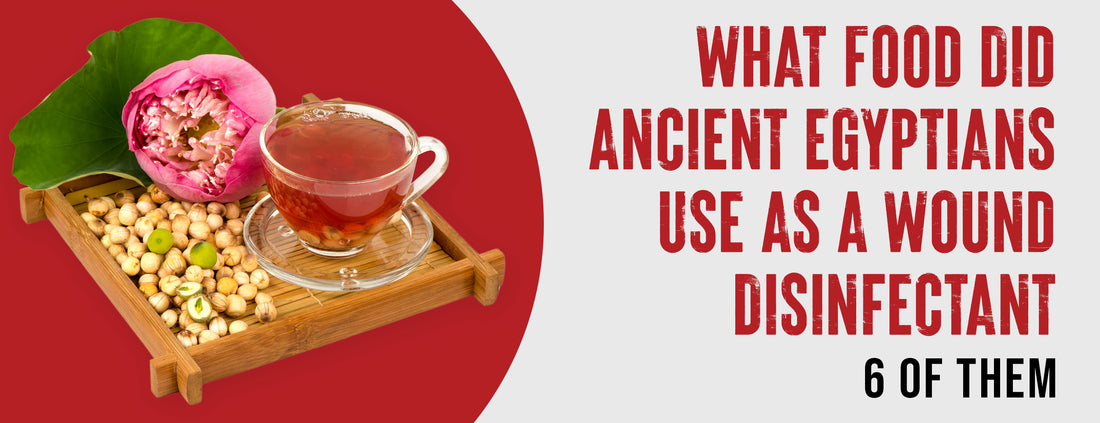Egyptian plasters contained honey, grease, and lint as their main ingredients. Lint made from vegetable fiber probably aided wound drainage. Oil and honey may have protected the wound from infection.
While modern medicine has many advanced techniques for wound care, the ancient Egyptians relied on natural remedies, including food items, to disinfect their wounds. In particular, they used surprisingly tasty everyday foods to ward off infections and heal wounds.
In this blog post, we'll explore what types of food the ancient Egyptians used as wound disinfectants and how they used them to keep their injuries clean and infection-free.
Ancient Egyptian Foods Used as Wound Disinfectants: 6 Explained

Let's discover the intriguing application of food as a wound disinfectant in ancient Egypt. Uncover the secrets of this historical practice through an explorative journey. Unveil the unconventional methods employed by the ancient Egyptians to enhance their healing rituals.
Honey
Honey was an essential part of ancient Egyptian society and was widely used in medicine due to its medicinal properties. It was also considered a precious commodity and used as a wound disinfectant. Some interesting facts about honey can be found here:
- Honey was believed to have antibacterial and anti-inflammatory properties.
- Honey was often combined with other herbs and plants to create medicinal remedies for various ailments.
- Honey treats wounds, cuts, and burns and promotes healing.
- The Ebers Papyrus, a medical text from ancient Egypt, mentions using honey to treat wounds.

Garlic
Garlic was used as a medicine in ancient Egypt and was believed to have numerous health benefits. It was a popular remedy for infections and was even used to treat wounds. Some of the interesting facts about garlic in ancient Egypt include:
- Garlic has antibacterial and antifungal properties.
- The ancient Egyptians consumed raw garlic as a remedy for infections and wounds.
- Garlic was also used as a poultice applied directly to the affected area.
- The Ebers Papyrus mentions using garlic to treat various illnesses, including infections.
Onions
Onions were a staple in ancient Egyptian cuisine and used for medicinal purposes. They were believed to have antiseptic properties and were used to treat various health conditions, including wounds. Interesting facts about onions and their use in ancient Egypt are:
- Onions were used as a poultice to relieve pain and inflammation caused by wounds and infections.
- Onions were also consumed as a natural remedy for coughs and colds.
- The juice of crushed onions was used as a disinfectant for wounds and abscesses.
- Onions were also believed to have diuretic properties and were consumed to treat edema.
Moldy Bread

Moldy bread may not sound like a remedy, but it was widely used in ancient Egypt to treat various ailments, including wounds. Some of the exciting facts about moldy bread and its use in ancient Egypt are:
- Moldy bread was believed to have antibiotic properties because of Penicillium mold.
- The ancient Egyptians used to apply moldy bread directly to the affected area to promote healing and prevent infections.
- The molds in bread were also used as antiseptics to treat mouth ulcers and infections.
Other Methods of Wound Disinfection in Ancient Egypt
As we delve deeper into the wound disinfection methods of ancient Egypt, we discover other effective means of treating wounds besides honey. One of these methods involves using natron and salt, while another includes oils and ointments.
Use of Natron and Salt
A natural mixture of sodium carbonate decahydrate and sodium bicarbonate that is abundant in Egypt and was widely used in various applications, particularly in the mummification process. On the other hand, salts are sourced from the Dead Sea and are rich in minerals that are beneficial to the body.
How Natron and Salt Were Used to Disinfect Wounds
Aside from the mummification process, ancient Egyptians also used natron and salt to disinfect wounds. These substances were mixed and applied to the wound's surface, creating an alkaline environment that killed bacteria and prevented further infection.
The Effectiveness of Natron and Salt in Wound Disinfection
Studies have shown that natron and salt effectively kill bacteria and prevent infection. The alkalinity of the mixture creates an unfavorable environment for bacterial growth, making it an effective wound disinfectant.
Use of Oils and Ointments

Ancient Egyptian Cosmetics
Ancient Egyptians were known for their love of skincare and beauty, which is evident in their elaborate burial rituals. They believed in the power of cosmetics, and their knowledge of ingredients and properties allowed them to develop effective products for wound healing.
How Oils and Ointments Were Used for Wound Healing
Oils and ointments were often applied to wounds to promote healing, hydration, and protection. Some commonly used ingredients include aloe vera, castor oil, and beeswax, which are proven antibacterial and anti-inflammatory.

The Benefits of Using Oils and Ointments for Wound Disinfection
Aside from promoting healing, oils, and ointments also provide a protective barrier preventing bacterial growth and further infection. These products contain natural and safe ingredients, making them an effective alternative to synthetic disinfectants.
Conclusion
The ancient Egyptians were undoubtedly ahead of their time regarding wound care and management. Their use of food as a disinfectant is a testament to their ingenuity and resourcefulness. From honey to moldy bread, onions to garlic, natron to oils and ointments, they left no stone unturned in their quest for optimal wound healing.
Today, we can still learn much from their methods and adapt them to modern-day wound care practices. The legacy of ancient Egyptian medicine lives on, and we can only marvel at how they achieved so much with so little.
So the next time you have a cut, scrape, or wound, consider reaching for some honey or garlic, just like the ancient Egyptians did. Who knows, it does the trick.









